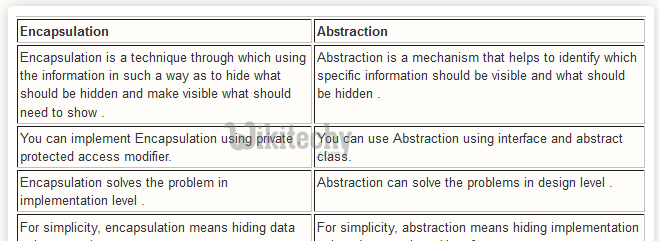C# Encapsulation - c# - c# tutorial - c# net
What is encapsulation in C# ?
- Encapsulation is used to hide its members from outside class or interface, whereas abstraction is used to show only essential features.
- Encapsulation is implemented by using access specifiers.
- An access specifier defines the scope and visibility of a class member.
- In C# programming, Encapsulation uses 5 types of modifier to encapsulate data.

C# supports the following access modifiers:
- Public
- Private
- Protected
- Internal
- Protected internal
Public
- In c#, the class member, that is defined as public can be accessed by other class member that is initialized outside the class.
- A public member can be accessed from anywhere even outside the namespace.
Private
- The private access specifiers restrict the member variable or function to be called outside from the parent class
- Private access specifier allows a class to hide its member variables and member functions from other functions and objects.
Protected
- The protected access specifier hides its member variables and functions from other classes and objects.
- This type of variable or function can only be accessed in child class. It becomes very important while implementing inheritance.
Internal:
- Internal access specifier allows a class to expose its member variables and member functions to other functions and objects in the current assembly.
- The internal access specifier hides its member variables and methods from other classes and objects, that is resides in other namespace.
Read Also
dot net developer internship , dotnet institute near me , .net training institute in chennaiProtected internal
- The protected internal access specifier allows a class to hide its member variables and member functions from other class objects and functions, but a child class within the same application.
- Protected internal is also used while implementing inheritance.

encapsulation vs abstaction csharp in c# Example
